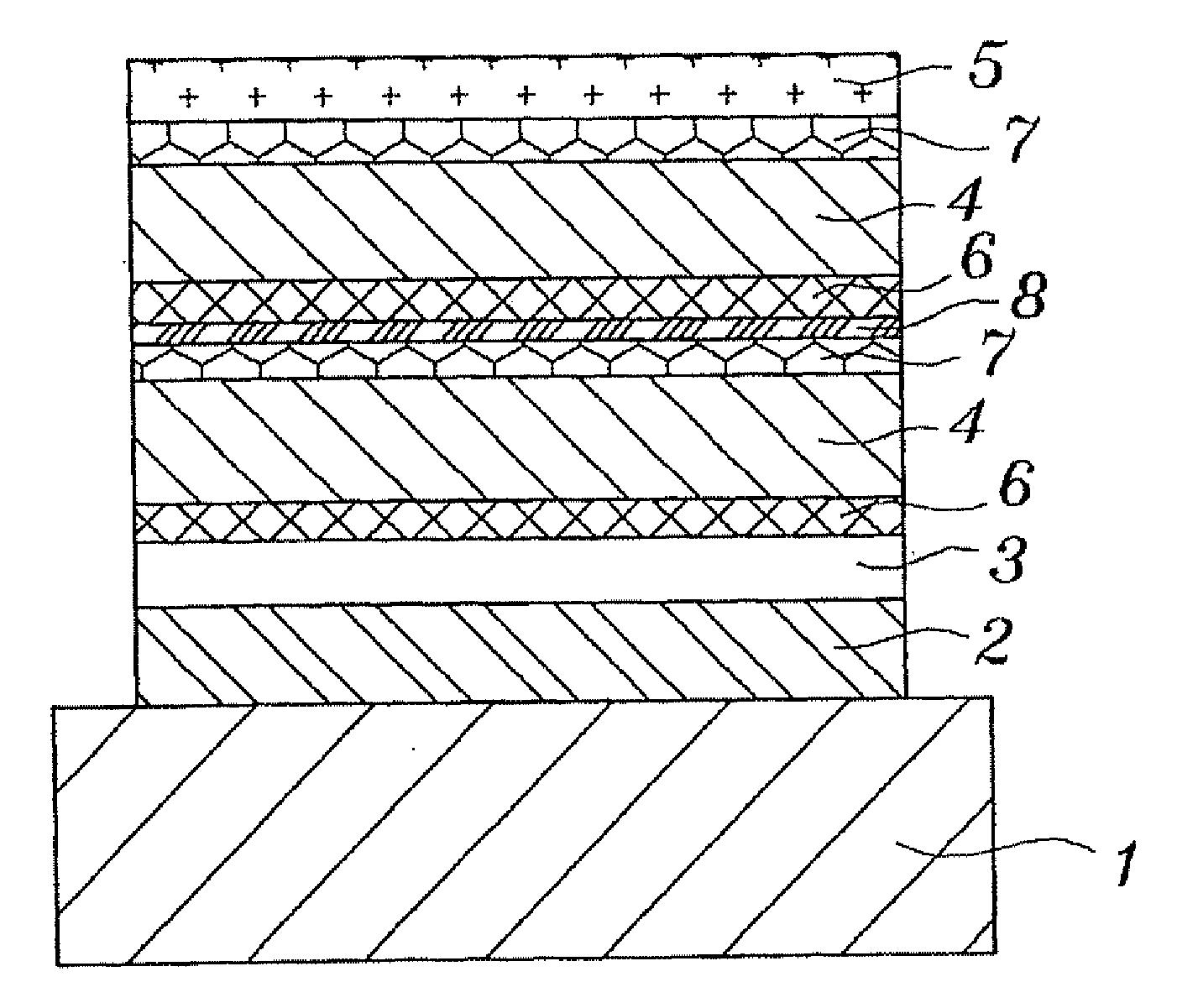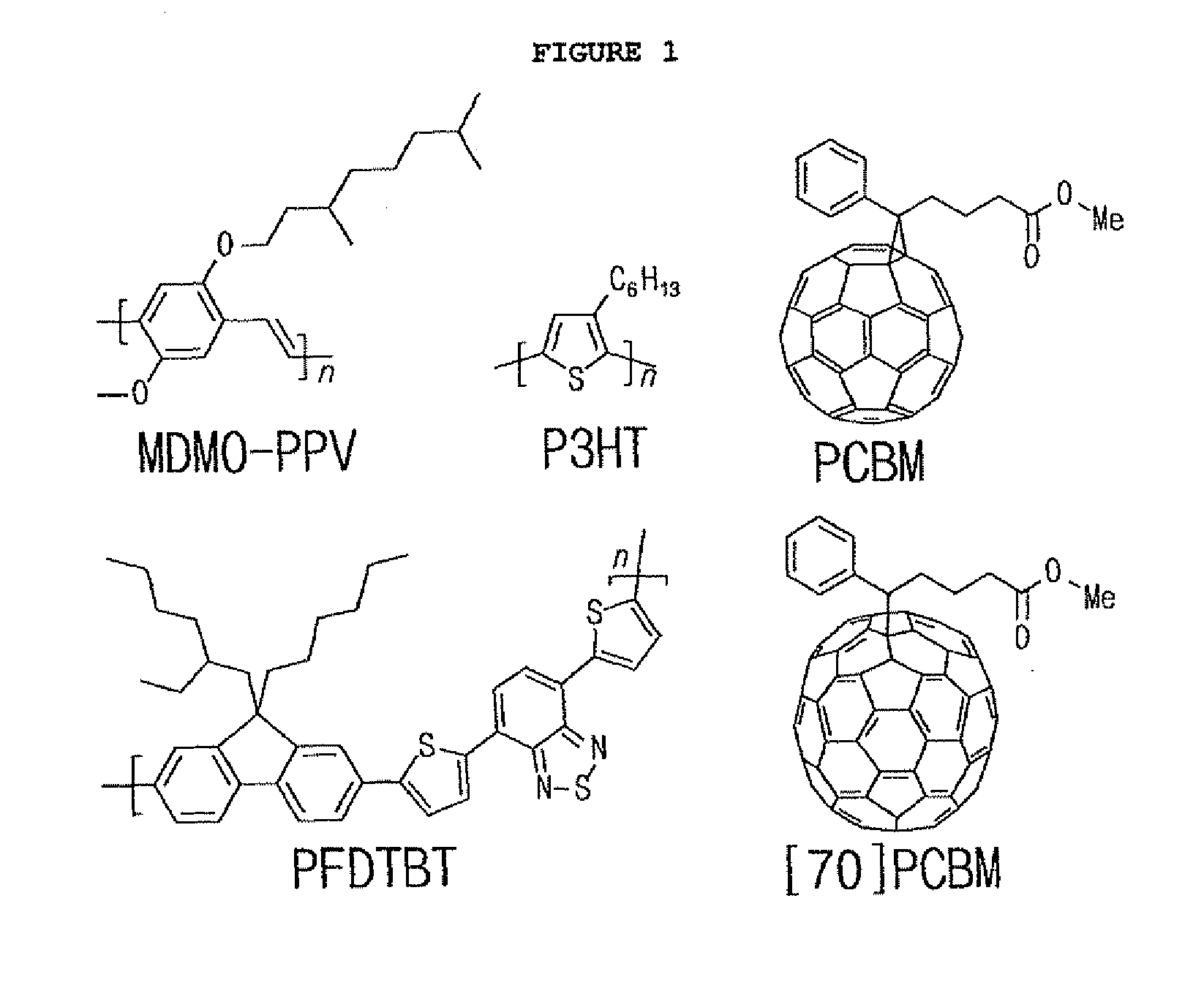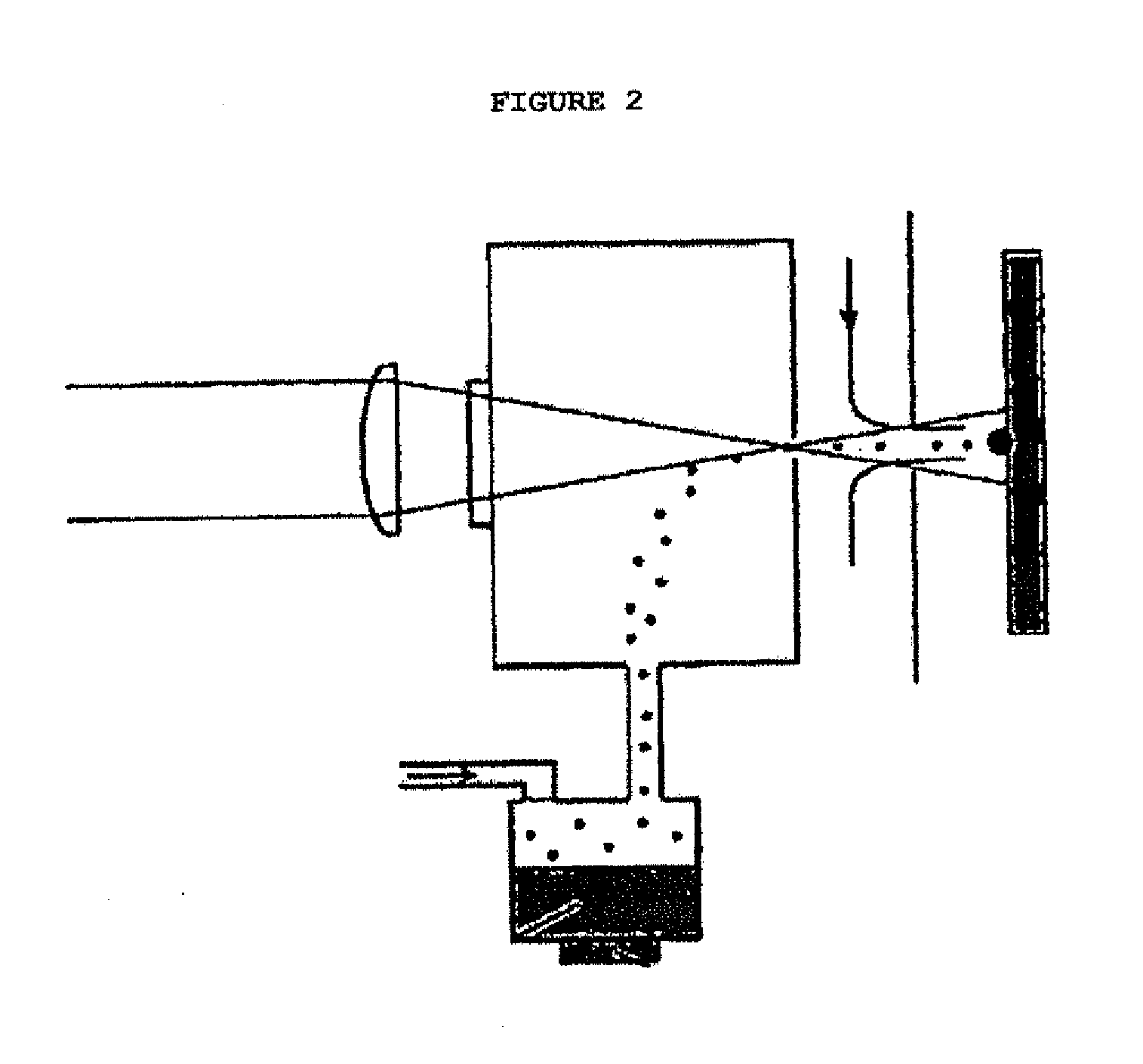Preparation method of organic photovoltaic cell's photoactive layer using aerosol jet printing
a photoactive layer and organic technology, applied in the direction of sustainable manufacturing/processing, final product manufacturing, thermoelectric devices, etc., can solve the problems of adversely affecting the efficiency or other device properties of the device, difficult to ensure reproducibility using such post-treatment, and low efficiency, so as to simplify the process of manufacturing the organic photovoltaic cell. , the crystallinity is high, the effect of easy formation
- Summary
- Abstract
- Description
- Claims
- Application Information
AI Technical Summary
Benefits of technology
Problems solved by technology
Method used
Image
Examples
example 1
First Manufacture of Organic Photovoltaic Cell Using Aerosol Jet Printing
[0072]A washed ITO (Indium Tin Oxide) glass substrate was subjected to O2 plasma treatment, and PEDOT-PSS (poly(3,4-ethylenedioxythiophene)-poly(styrenesulfonate)) (AI 4083, available from Bayer Baytron) was then spin-coated to a thickness of 40 nm thereon, thus preparing a transparent electrode.
[0073]A blend of P3HT (poly-3-(hexylthiophene) and PC71BM at a ratio of 1:0.7 was dissolved in an amount of 0.67 wt % in an ortho-dichlorobenzene solvent, thus preparing a photoactive solution.
[0074]The photoactive solution was placed into an aerosol jet system, and voltage of 35V was applied to an ultrasonic transducer, thus atomizing the photoactive solution, after which the atomized photoactive solution was transferred to an aerosol jet nozzle in the presence of nitrogen gas flowing at 18 sccm.
[0075]The atomized photoactive solution in the nozzle was accelerated with the addition of a sheath gas (nitrogen gas) at 45 ...
example 2
Second Manufacture of Organic Photovoltaic Cell Using Aerosol Jet Printing
[0077]An organic photovoltaic cell was manufactured in the same manner as in Example 1, with the exception that PC61BM (1:0.7) was used instead of PC71BM.
example 3
Third Manufacture of Organic Photovoltaic Cell Using Aerosol Jet Printing
[0078]An organic photovoltaic cell was manufactured in the same manner as in Example 2, with the exception that the blend of P3HT and PC61BM was dissolved in an amount of 1 wt %.
PUM
| Property | Measurement | Unit |
|---|---|---|
| thickness | aaaaa | aaaaa |
| voltage | aaaaa | aaaaa |
| transparent | aaaaa | aaaaa |
Abstract
Description
Claims
Application Information
 Login to View More
Login to View More - R&D
- Intellectual Property
- Life Sciences
- Materials
- Tech Scout
- Unparalleled Data Quality
- Higher Quality Content
- 60% Fewer Hallucinations
Browse by: Latest US Patents, China's latest patents, Technical Efficacy Thesaurus, Application Domain, Technology Topic, Popular Technical Reports.
© 2025 PatSnap. All rights reserved.Legal|Privacy policy|Modern Slavery Act Transparency Statement|Sitemap|About US| Contact US: help@patsnap.com



